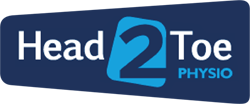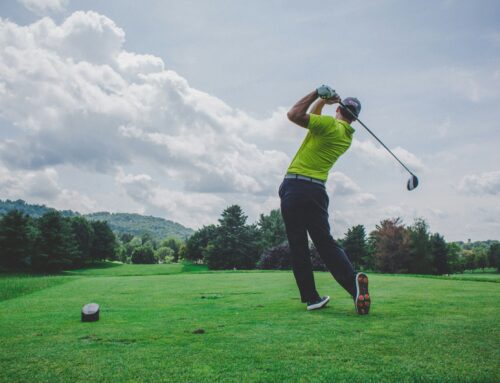How should we manage chronic Tennis Elbow?
Tennis elbow is one of the most common upper limb injuries we see at Head2Toe Physio Clinic. Tennis elbow is really an umbrella term used to describe pain on the outside of the elbow and radiating into the forearm. The complication is that the pain could be arising from faults with various structures, including the neck, elbow joints, muscles, tendons, nerves or a combination of two or more of any or all. In the literature tennis elbow is also known by other names such as lateral epiconylitis, lateral epicondylalgia and lateral elbow tendinopathy.
Patients often describe pain on activities like gripping, lifting, twisting and its not uncommon for pain to be brought on by a spell of digging in the garden, return to tennis after a winter off or a weekend of putting together flat pack furniture!
When do we see patients?
It’s common for our Physiotherapists to see Tennis Elbow patients after a few weeks or months of pain. By the time they get to us, patients have normally rested, iced, taken some ibuprofen and possibly done some daily stretches, especially if they’ve been researching on google beforehand. The most common frustration is that after a period of rest, avoiding sports and heavy work, things start to feel better, only to return with a vengeance once they try to start again.
The questions we get asked are, What is it? Why have I got it? Why will it not go away? Should I take the steroid injection on offer from my GP? Will Physio help?
Whats the current evidence?
In a recent review piece, Bill Vincenzino (2016), outlines some of the current research findings. He notes that research seems to indicate that for short term pain relief, steroid injections work well, with 78% of patients who had a steroid injection reporting good relief at 6 weeks, compared to only 27% in those patients who are careful not to make things worse but essentially just wait and see how things will go (Bisset et al, 2006).
What’s interesting is that at 26 weeks post injection, things seem to be reversing with 45% of injection patients reporting relief compared to 83% of the wait and see group. At 1 year after injection, this had increased to 68% and 90%. This would seem to indicate that any short term gain with injection might well be followed by long term pain!
Studies comparing Physiotherapy treatment (loading exercises and manual mobilisation which the patients can repeat themselves) and injection, showed similar improvements in both groups at 6 weeks (65%) but at 1 year afterwards, the Physiotherapy group reported a 94% success rate (Vincenzino, 2003, 2007). This would seem to suggest that patients who seek Physiotherapy treatment for tennis elbow, make expect similar results in the short term as those having a steroid injection but also make much greater improvements over the longer term.
Why not do both?
To discover whether having Physiotherapy and a steroid injection would offer even better results, Coombes et al (2013) and Coombes (2009) divided patients into 4 groups. One group had a steroid injection, the second had a placebo injection (no steroid), the third combined steroid injection and Physiotherapy and the fourth combined placebo injection and Physiotherapy.
The key findings are that adding Physiotherapy made no difference to the steroid injections short term effectiveness in relieving pain, or indeed the subsequent drop in effectiveness at 26 weeks.
However, at 1 year follow up, there was 100% success in patients who had the placebo injection, compared to 93% who had just the placebo injection. There was only 84% success in the steroid injection group and this did not improve if combined with Physiotherapy.
The study would seem to back up the observation that having a steroid injection for tennis elbow whilst bringing short term pain relief may well contribute to a longer term pain problem. In addition, patients receiving a steroid injection were much likely to suffer a recurrence of their pain (54%) than those groups who had just Physiotherapy (8%) or took the wait and see approach (9%).
So whats the answer?
Vincenzino’s conclusion is unsurprisingly that all patients are different. What is apparent, is that steroid injections are clearly not the answer, even when combined with Physiotherapy. In those patients with less severe pain or non heavy manual jobs, the wait and see approach might be advised. Physiotherapy should focus on gradual loading programs (strengthening) and manual techniques which can reduce pain, should be taught to the patient as well.
If you or anyone you know is suffering from elbow pain and would like to have a physiotherapy assessment for suitability of physiotherapy treatment, contact us here.
Bisset L, Beller E, Jull G, Brooks P, Darnell R, Vincenzino B. Mobilisation with movement and exercise, corticosteroid injection, or wait and see for tennis elbow: randomised trial, British Medical Journal, 2006;333(7575):939
Coombes, BK, effect of corticosteroid injection, Physiotherapy, or both on clinical outcomes in patients with unilateral lateral epicondylalgia, Journal of the American Medical Association, 2013; 309(5):461
Coombes B, Bisset L, Connelly L, Brooks P, Vincenzino B. Optimising corticosteroid injection for lateral epicondylalgia with the addition of Physiotherapy: A protocol for a randomised control trial with placebo comparison, Biomed Central Musculoskeletal Disorders, 2009;10(1):76
Vincenzino B, Evidence-informed approach to managing chronic tennis elbow: injections, physiotherapy or wait it out? Intouch, 2016, 155:4-8.





